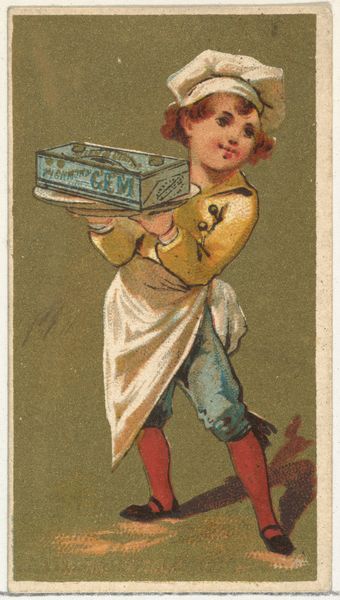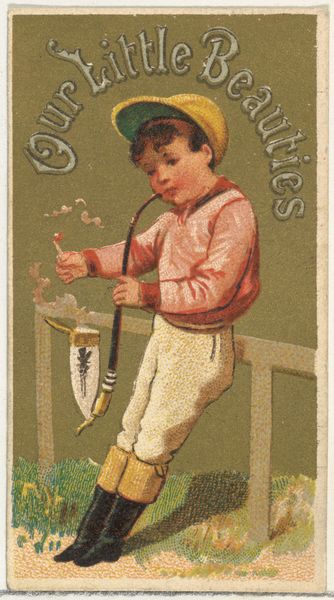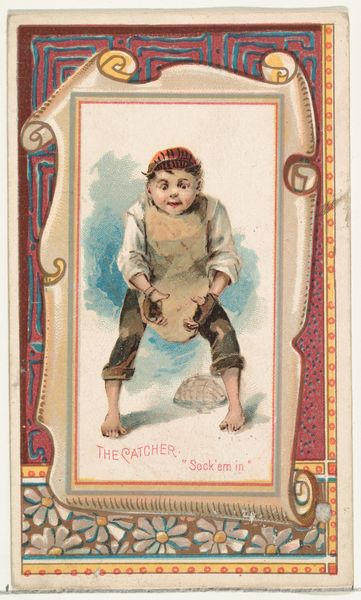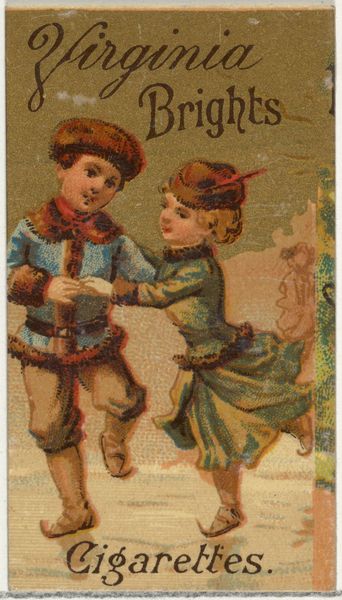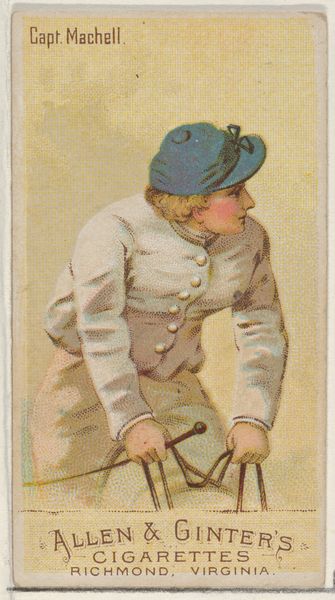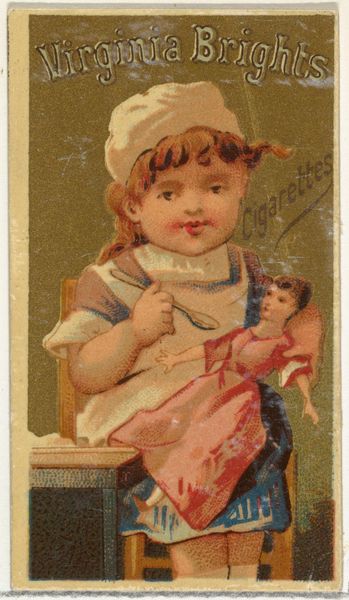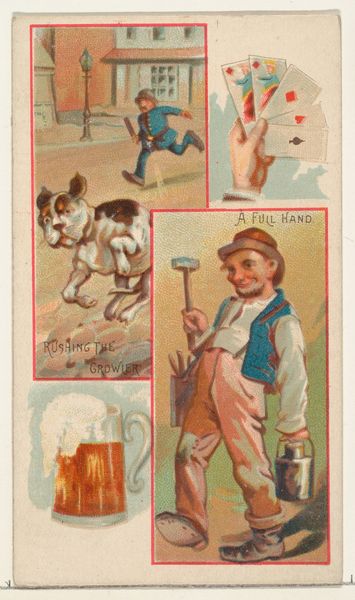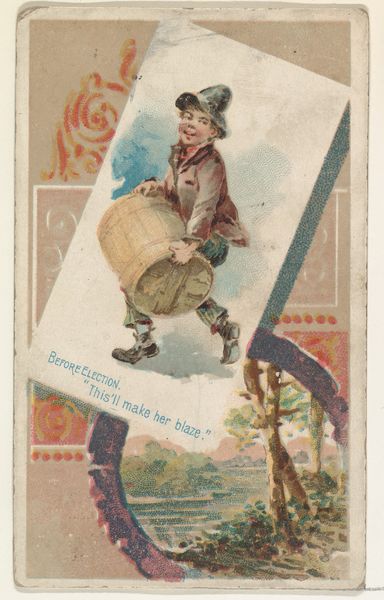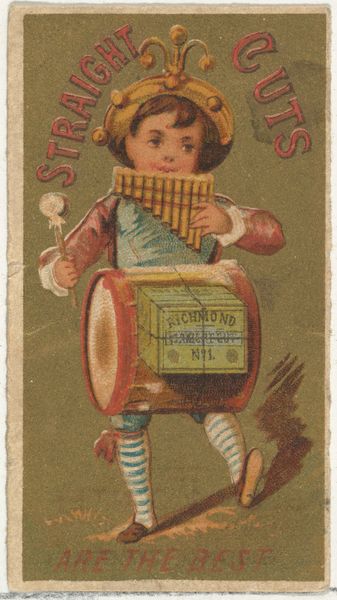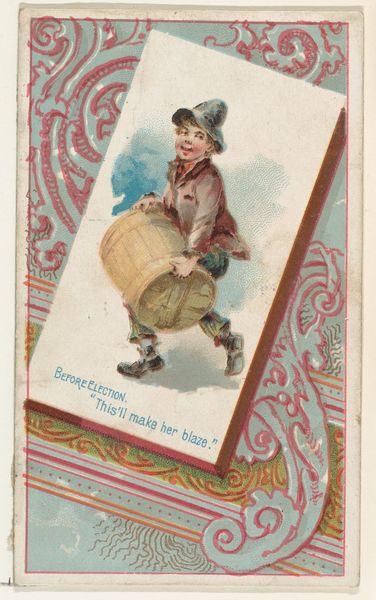
From the Girls and Children series (N64) promoting Virginia Brights Cigarettes for Allen & Ginter brand tobacco products 1886
0:00
0:00
Dimensions: Sheet: 2 5/8 × 1 1/2 in. (6.7 × 3.8 cm)
Copyright: Public Domain
Editor: Here we have "From the Girls and Children series (N64) promoting Virginia Brights Cigarettes for Allen & Ginter brand tobacco products," dating back to 1886. It's a colored-pencil print. I'm struck by the child’s attire and how incongruous it seems in relation to the product being advertised. How do you see this piece functioning within its historical context? Curator: It’s fascinating when we consider the confluence of labor, commodity, and representation in something like this. A print such as this would have been mass-produced, included in cigarette packs to entice consumers, depicting children, perhaps as cooks or bakers. But we have to ask: who was producing these images? What were the conditions of their labor, and what were they paid? Editor: That's a perspective I hadn't considered. I was mainly thinking about the message being conveyed but thinking of labor behind is very important. What materials were commonly used in such prints? Was there a specific printing method favored? Curator: Usually, these would've been chromolithographs – a relatively inexpensive color printing process at the time. The availability of such technologies, combined with the demand for advertising materials, spurred a massive industry. Think about the socio-economic status of both those consuming and creating these images. How does that power dynamic play into what's represented, or rather, what's *not* represented? Editor: So it's not just the image itself, but the entire production chain, from the pencils used to the printing press. It’s interesting how even seemingly innocuous images reflect broader material and social realities. Curator: Precisely. We examine not only what is depicted but *how* it's depicted and *why* it's depicted that way. That's the crucial starting point. I hope it was useful! Editor: Definitely! I'll definitely look at things differently going forward, thank you.
Comments
No comments
Be the first to comment and join the conversation on the ultimate creative platform.
